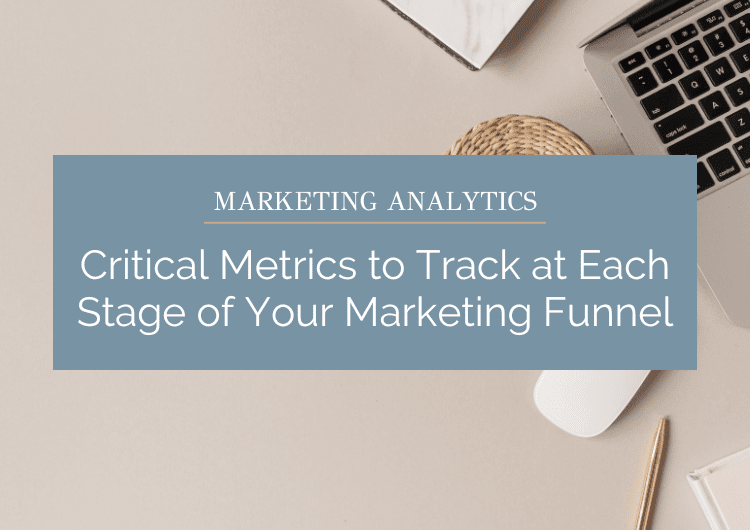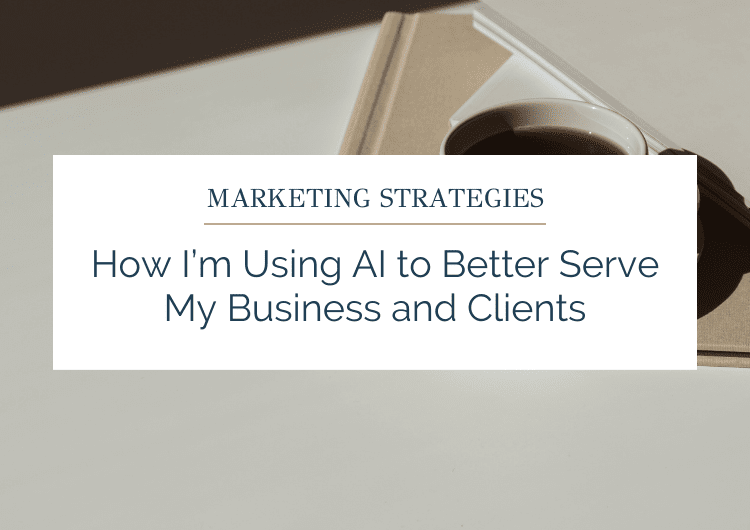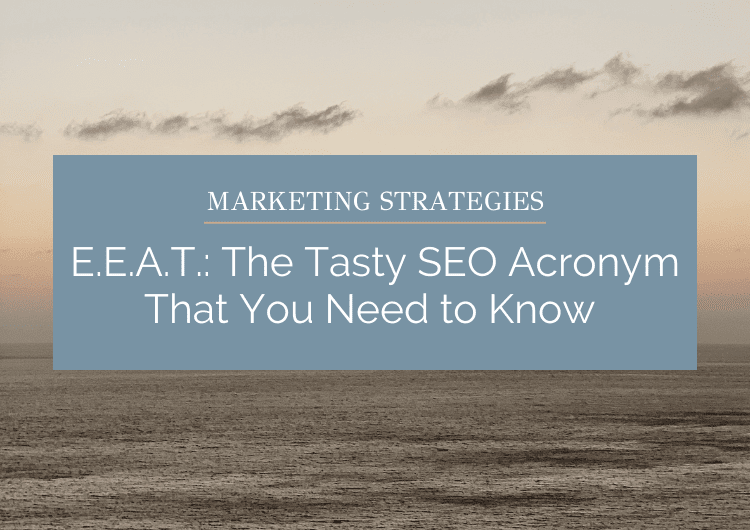Critical Metrics to Track at Each Stage of Your Marketing Funnel

I’ve seen many different marketing funnels over the years, from basic to advanced. Technology has allowed us the ability to quantify and show metrics throughout each step of the customer journey, making funnels super detailed and complex. This can feel overwhelming for small business owners who are setting up their marketing funnel. In this blog, I’m simplifying the marketing funnel steps and helping you to determine the areas where you should focus.

Step 1: Awareness
The marketing funnel is really a fancy way of showcasing the journey customers take with your brand over time. At the top of the funnel is awareness. This is when you’re first introduced to your target audience. During the awareness phase, you want to ensure that everything you’re doing is not about you, but instead, about the solutions that you offer to your ideal customer. By putting them first you will build trust, showing that you not only know what you’re talking about but that you are also there to serve them.
Data metrics examples to look at: Impression, Reach
Step 2: Interest
Interest is probably no surprise to many of you as we tend to get stuck here on a day-to-day basis. Seeing what people engage with and consume from your content is a great way to measure movement through the funnel. It’s important to remind yourself that you need to keep people moving through the funnel. I’ve seen so many businesses that have a ton of followers and high engagement rates but struggle to pay the bills. All of these metrics help you understand how potential and current customers are engaging with your content but make sure you’re moving them on to the next step.
Data metrics examples to look at: Engagement, Followers
Step 3: Trust
I love this level because it moves you past the vanity metrics of social media and dives into more meaty metrics that you can quantifiably measure. It tells you if the type of content you’re producing is causing someone to take the next step with you and dive deeper into what you have to offer. Here you are developing a level of trust, letting people know that there are actual testimonials and substance backing up what you share on social media or in email. When someone comes to your website and is clicking around a bit, this shows their level of trust.
Data metrics examples to look at: Increased Website Traffic, Repeat Visitors, More Time & Page Views
Step 4: Lead
This is the step in which an interested person becomes an actual lead. It is one of my favorite levels of the marketing funnel because it is a true indicator that you have taken someone from awareness to interest, with tangible metrics showing that they are interested in your product or service. They are willing to take time out of their day to fill out a form or reach out to discover more.
Data metrics examples to look at: Form Fills, Email Sign-ups, Registrations
Step 5: Customer
Last but not least is taking someone from a lead to a customer. This can happen in various ways whether you’re a service-based business or an Ecommerce-based business. Ultimately a customer is somebody that has given you their money in exchange for your offerings.
Data metrics examples to look at: Conversions, Sales
Bonus Step 6: Loyalty
So there is actually one more step I like to include, and that is the power of repeat customers. This is probably one of the most essential parts of funnel success. All too often we focus on the top of the funnel, trying to create more awareness and interest. But at the end of the day, we are losing customers down at the bottom. It’s important to take just as much care of your existing customer base as you do a new lead that comes through the pipeline or the funnel.
Data metrics examples to look at: new vs existing, referral, repeat sales, increase order size, or contracts.
What metrics are you looking at to determine the success of your marketing funnel? Reach out to us or let us know on Facebook!

